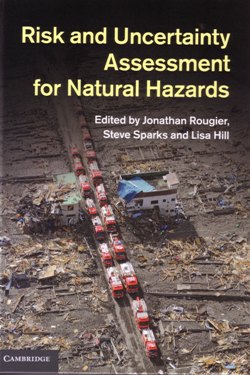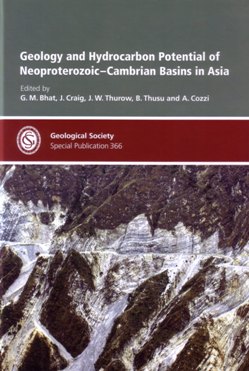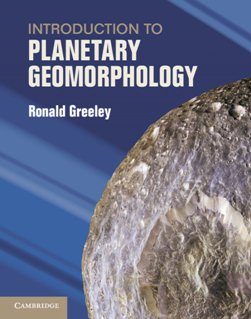
Risk and Uncertainty Assessment for Natural Hazards
The editors, affiliated with the Bristol Environmental Risk Research Centre, have led a NERC scoping study on the analysis, propagation and communication of probability, uncertainty and risk. The aim was to provide scientific advice and recommendations to NERC to help develop a research programme in uncertainty and risk, culminating in a workshop from which this book evolved.
The study focused on understanding risk and uncertainty with respect to natural hazards: how they are assessed and quantified, how they are communicated, to what extent current practices meet the needs of stakeholders, and how the current situation can be improved, with reference to practice in other areas. This was achieved by involvement of an expert panel of specialists in natural hazards, in statistics, in risk perception and communication, and in insurance and policy.
This book is not about geology or geohazards, nor is it concerned with teaching how to undertake an assessment. It is more concerned with policy and perception than the needs of the practitioner. Of the 16 chapters just three are concerned with types of geological hazard (earthquakes, landslides and volcanoes); the remainder cover a broad range of topics (including hydrometeorology, flood risk, tsunami hazard, wildfires and ecotoxicology), reflecting the wide range of backgrounds of the contributors, only 10% of whom are from Earth science institutions (30% from university geography departments). The coverage is not comprehensive, omitting such geohazards as shrinking soils, karstic solution, and mining. However, the book emphasises the need to communicate the potential occurrence of a hazard including the degree of uncertainty and risk to non-specialists, and in this the book focuses with effect.
Each chapter is a stand-alone contribution. Whereas this tends to make the coverage somewhat disconnected, it nevertheless provides an overview of the context and alerts the reader to broader societal concerns. Those wishing to identify an appropriate methodology for undertaking an assessment for each topic can use the useful bibliographies concluding each chapter.
Assessment of risk and its concomitant uncertainty form the common thread in the context of economic activity and the adverse impact of hazard events. An integrated approach has been adopted, reflected by an absence of mathematical abstractions and bearing in mind the needs of the decision-making process concerned with prediction and dealing with aftermath.
This is a somewhat expensive volume for the student, but a useful acquisition for the library of an institution concerned with risk assessment and management, and the development of natural hazards policy.
Reviewed by Mike Rosenbaum
RISK AND UNCERTAINTY ASSESSMENT FOR NATURAL HAZARDS
JONATHAN ROUGIER, STEVE SPARKS AND LISA HILL (EDS) Published by: Cambridge University Press 2013 ISBN: 978 1 107 00619 5 (hbk) 574pp List price: £90.00

Geology and Hydrocarbon Potential of Neoproterozoic-Cambrian Basins in Asia.
The Neoproterozoic-Cambrian succession is of undoubted global importance from the petroleum point of view. Oil and gas are produced commercially from Neoproterozoic basins in Oman, Siberia and China, and there have been successful tests in North America, North Africa, India, Pakistan, Australia and elsewhere. This book concentrates on the potential in Asia, and is therefore a welcome follow-up to Special Publication 326 (Craig et al., 2009), which dealt largely with North Africa.
Of the 15 papers that comprise the book, seven deal specifically with the Neoproterozoic of India, two with Pakistan, and one each with Oman, Siberia and China. The remainder include an introduction and two papers comparing India, Pakistan and Oman.
The seven papers on India and the two on Pakistan deal comprehensively with the depositional history and the petroleum potential of the various Neoproterozoic basins. In India, the Bikaner-Nagaur and Vindhyan Basins have tested oil and wet gas respectively to surface. The other basins in India are still undrilled but surface geological mapping has proven the presence of source rocks and likely reservoirs. In Pakistan, minor oil production has been achieved from the Potwar Basin, while numerous oil and gas shows have been recorded on the Punjab Platform. The scope of the papers varies from generalised regional synthesis to details of proven and potential source rocks, reservoirs, balanced structural cross-sections and descriptions of individual fossils.
The two papers comparing the Neoproterozoic of India, Pakistan and Oman provide further details of plate tectonic history, sedimentology, reservoir quality and source rock geochemistry. The paper by Smith claims that the Ara Formation of Oman hosts the world’s oldest commercial oil. There are tests from older reservoirs in Australia (live oil, 1.4 Ga) and in India (wet gas, 1.7 Ga, possibly even older), but these have not reached commercial production.
The single papers on the productive Lena-Tunguska Province of Siberia and the NW Tarim Basin of China are particularly clear and well written. The NW Tarim paper is unusual in a volume of this kind in that its author concludes that although all the key elements for a hydrocarbon play are present, they are risky, and a prolific Neoproterozoic hydrocarbon play is unlikely to exist.
The book is profusely illustrated, though some of the figures suffer from a reduction in size to the point that pieces of text and numbers in particular are illegible. There is a very comprehensive index.
Reviewed by Pete Webb
GEOLOGY AND HYDROCARBON POTENTIAL OF NEOPROTEROZOIC-CAMBRIAN BASINS IN ASIA.
G M BHAT et al. (Eds). Published by: The Geological Society 2012 ISBN: 978-1-86239-346-2 List price: £110/$200; Geological Society £50/$100; other qualifying societies £60/$120 312 pp W: www.geolsoc.org.uk/bookshop

The Journeyman’s Tale
The late Joe McCall had an exceptionally long career and was much involved with the Society. This is the third volume of his family history and autobiography. I remember being with Joe in a Strasbourg restaurant in the 1980s when he suddenly said loudly “I am one of the few English men still around who has actually FOUGHT THE FRENCH!”.
We looked around nervously, thinking that might not have been a good thing to say in that place. He was referring to his participation in the May 1942 invasion of Vichy-held Madagascar. About half of the book deals with the vagaries of his army training and that campaign. When he went to the Royal School of Mines (RSM) after the war, he was one of only six students reading pure geology, but they included Roy Elwell (later of Kings College) and David Holt (later of Freeman Fox and Partners). They were taught by formidable geologists such as H H Read, Alan Wood and Robert Shackleton.
Joe received a PhD for work on the Dalradian of Donegal alongside Wally Pitcher and Derek Flynn among others. His behind the scenes anecdotes bring out the human side of that great generation of geologists, as well as the social side of the RSM and of mapping in Ireland. In 1951, Joe joined the Colonial Geological Survey as a hydrogeologist in the Public Works Department in Nairobi; but after working in Western Kenya for a couple of years he transferred to the Kenya Geological Survey. He mainly undertook field mapping in western Kenya including early work on carbonatite volcanics, during which he became acquainted with Louis Leakey, but also carried out a pioneering gravimetric survey of part of the Rift Valley. He describes the rigours of working in the bush which seem redolent of 19th Century exploration.
In 1960, Joe was tipped off by John Sutton of an advertised senior lecturership at the University of Western Australia. Joe secured the job and the book closes with him about to depart to Perth. Joe intended a fourth volume to be published this summer. I hope he was able to complete it. This well-presented paperback is a good read, loaded with Joe’s great sense of humour.
Reviewed by Brian Marker
THE JOURNEYMAN’S TALE
G J H McCALL Published by: Bright Pen Books (Sandy, Bedfordshire) 2013. 233pp ISBN 978-0-7552-1532-4 or as an e-book from www.authorsonline.co.uk

Introduction to Planetary Geomorphology
The data returned to Earth by spacecraft orbiting or flying by the planets and their satellites contain images of astonishing beauty and great geological importance. This excellent book by the late Ron Greeley introduces laypeople and geologists alike not just to geomorphology on other planets, but to the techniques of image manipulation and interpretation as applied to planetary surfaces.
Greeley, originally a carbonate paleontologist, mused that he gained entry into the NASA Apollo program when someone possibly misunderstood his PhD thesis title, on “lunulitiform bryozoans”, as being somehow related to the Moon! Nevertheless, he went on to forge a successful career in comparative geomorphology, planetary imaging and analysis, and was instrumental in many of the missions detailed in this volume.
An introduction to the planets of the Solar System and how flight projects move from the drawing board to launch pad is followed by a useful chapter discussing image processing. It provides an overview of how data are acquired by different methods and sensors, downloaded to Earth and then dispersed to a variety of repositories, processed, analysed and published. A final general chapter provides an overview of the four processes which influence the shape of planetary surfaces: tectonism, volcanism, impact cratering, and gradation. Examples of the Earth's landforms resulting from these process are provided, although mostly from the Western Hemisphere, and almost exclusively from the USA.
Seven prodigiously illustrated chapters then follow, discussing seminal landforms on Earth's Moon, Mercury, Venus, Mars, and the satellites of Jupiter, Saturn, and Uranus and Neptune. A final chapter covers the upcoming missions to Jupiter and Pluto and the prospects for further missions. Images and discussions are up-to-date and include those from the MESSENGER project to Mercury in 2011.
Unfortunately it shares with other recent books on planetary geology the fact that all images are monochrome, in some cases robbing the reader of both the beauty of false- or true-colour images, and of useful information. However, the pictures are often iconic, and have been selected to illustrate the best example of each landform type clearly. Every chapter is followed by assignments for students, new terms are shown in bold type and defined on their first use, critical references are sparingly mentioned in the text and listed fully in a bibliography, and the index is comprehensive, making the book a useful textbook as well as a pleasure to read. It can be recommended for professional geologists and educated laypeople with an interest in planetary geology, and for undergraduate students. This book was submitted for publication by Greeley just one month before his sudden death, and stands as a fitting tribute.
Reviewed by Lewis McCaffrey
INTRODUCTION TO PLANETARY GEOMORPHOLOGY
RONALD GREELEY Published by: Cambridge University Press, 2013 ISBN: 978-0-521-86711-5 (hbk) 252pp. List price: US$85